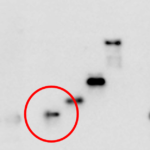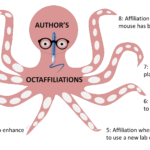ChatGPT’s capabilities are irrefutable. However, when asked to edit the language of scientific papers, it can make mistakes. Crucially, ChatGPT best guesses the next word; it cannot deduce the author’s intended meaning in the same way an experienced subject-matter expert can, and it cannot leave comments asking for clarification as a human editor would do. […]
Can images from the Internet or a Chinese-language journal be used for publication in a different journal?
Yes, you can re-use images from the Internet and Chinese-language journals if you have obtained the necessary copyright permissions and you cite the original source (in the figure legend). Journals will not accept re-used images for which you have not obtained the necessary permissions. Check the copyright of the image If you want to re-use […]
Biomedical images – how much processing is too much?
Of almost 4000 retractions listed in the Retraction Watch database in 2021, over a quarter involved “concerns/issues about image” or “duplication of image.” Similarly, a recent study found that two-thirds of 120,000+ comments on PubPeer involve concerns about images. Inappropriate manipulations range from innocent errors to “beautification” to intentional falsification. It is unsurprising, then, that […]
Which author affiliation do I use?
Multiple relocations for fixed-term contracts are the norm in academia. This means that researchers often publish data collected from one institution while working at another. Some journal submission systems only permit one affiliation per author to be added, making authors unsure of which affiliation to use. This can become especially troublesome if equal contributions to […]
Tips to reduce wordiness in scientific writing
Wordy text can be difficult to read. In this blog, we discuss ways to reduce wordiness in scientific writing, using real world examples from papers edited at International Science Editing. Look for synonymous words People use social media to share their views, thoughts, and opinions. People use social media to share their views. Views, thoughts, […]





